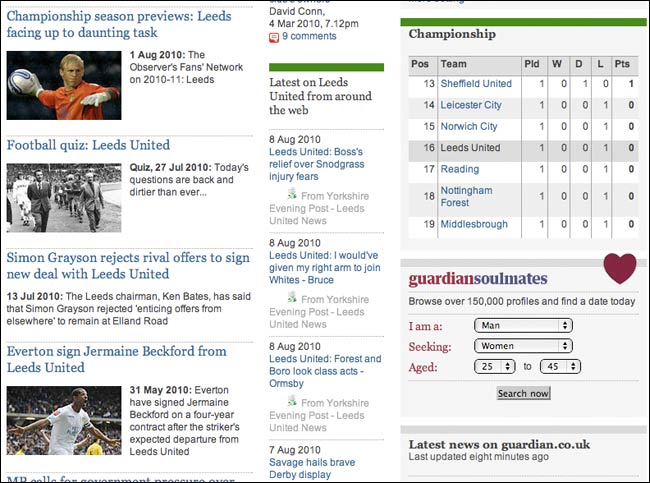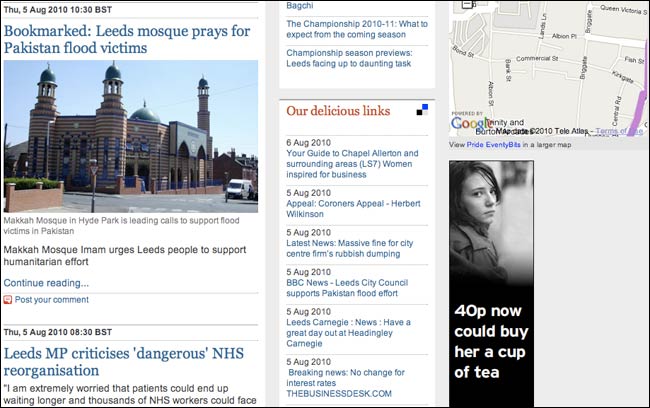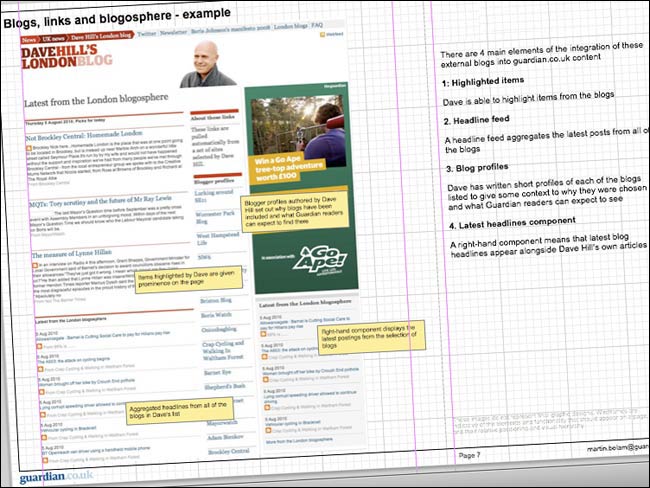5 ways that The Guardian puts external links onto web pages
Last week, Patrick Smith sparked off a lot debate with a blog post entitled "Link to the past: why do some news sites STILL not link out in 2010?". In it, he mentioned The Guardian website as being one of the best examples of linking out. I thought it might be worth blogging about 5 different ways that The Guardian puts external links onto web pages.
The WYSIWYG approach
As you'd expect, in our CMS web tools, any journalist, sub-editor, production person, or even the information architect, can add in hyperlinks to an article by clicking on a WYSIWYG-style link icon, or by adding <a href=""> into the text by hand.

The headline feed approach
If you visit our Leeds United tag page, for example, you'll see a component bringing in 'Latest on Leeds United from around the web'. This automatically imports relevant headlines from sources like the Yorkshire Evening Post or BBC News sites.

The Delicious linklog approach
To use Leeds as an example again, on the pages of our local Leeds blog, you'll find a Delicious links component. Our beatblogger saves links to stories of local interest, and the feed is automatically integrated into guardian.co.uk.

The 'Blogosphere' approach
Our London blogger, Dave Hill, takes this idea further, and he links to a wide range of London based blogs. There is a component adding their latest posts into the right-hand column of Dave's blog, and a page which aggregates the headlines from all of them, and allows Dave to highlight particularly interesting posts. He has also written a profile of each blogger to give a bit of context, and prime the guardian.co.uk audience for what to expect from these links.

The 'network' approach
"The Guardian Environment Network brings together the world's best websites focusing on green topics. The network connects sites from across the globe that provide high-quality news, opinion, advice, blogs, data and tools"
The Guardian Environment Network is a more formal grouping of external sites, all of which have been sense-checked by our editorial teams so that we know they are providing good quality content on the environmental theme. The best posts from around the network are pulled into The Guardian site in full. There is also a commercial element, with The Guardian Green Ad Network helping the paper to grow and share revenue with these partner blogs.
Next...
Having initially praised the paper as a good example of linking out, Patrick retracted his endorsement of the guardian.co.uk linking policy on the basis of comments pointing out that a lot of our inline article links are internal facing. In be picking up this point in my next post on this theme.
I like the idea of companies using external linking but I think that it is problematic. I think that it is costly and/or time consuming to implement when you factor out spam filtering etc. It will be interesting to see what The Guardian is able to accomplish using these tools.
So there could be a way of getting a link onto the Guardian website. Say, for example if you had a feed related to a football team?
Yes Stephen, but you'd have to try a bit harder than you did in attempting to get a link on here ;-)
Rico, you seem to have missed the point that all of the methods listed above are based on up front editorial decisions, not based on leaving a comment system open to be abused by the kind of people who'll type out any old rubbish in the vague hope of getting one 'dofollow' link.
This is an interesting article Martin - I had wondered how organisations such as the GMG and BBC managed their links en-masse.
With 'The Guardian Environment Network', is there a regular review of sites once they have been submitted to the network... i.e. if you add www.????.com this week and then in three months time it's no longer about football, it's about something far less appropriate... how do they pick it up?
Also, how do you handle sites like the Premium TV websites that don't have a public RSS feed - do they have a privately available one?
Hi Darren, the sites in the Environment network are regularly checked, so we could very quickly drop a website that went 'rogue'.
As for the Premium TV website, I don't know anything about that site in particular, but news organisation have several different ways of syndicating content. NewsML, for example, is an exchange format that emerged around the same time that RSS was getting going on the net.
I don't like the way The Guardian links, even internally, in a lot of articles. I was just reading about the cyberwar and Irans nuclear reactors and got lost following a link so thought I'd come here and add a little constructive feedback...
On this article we have:
He added that a deliberate hack of an electric generator at the Idaho National Laboratory, via the internet, had previously demonstrated that infrastructure could be persuaded to destroy itself.
I have extremely poor eyesight (not just to a level of needing spectacles, more to a level I legally cannot drive and so on), so cannot easily hover over links to see where they are taking me. I can easily change font sizes in articles to make them legible (just!), but anything else is impossible. In the context of that quote above, it appears that the "internet" link is taking me to the original story. A link to a tag page is bordering on useless there in my opinion, surely it would be better to link to the original story that it is mentioning?
Don't even try comments linking on the Guardian, their comment section is NoFollow. I found that the hard way. But great article Martin